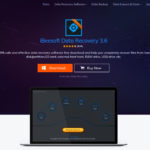Behind Every Great Brand, There’s Great Digital Asset Management
Data is a self-fulfilling prophecy. The more you collect, the more effectively you can use it. The more you use, the more you rely on it. And the more you rely on data, the more you need. As the endless cycle demands more data points and more software to analyze them, at some point there’s going to be a critical mass.
Eventually you’ll run into an absolute mess of systems and processes that need to interact, but weren’t necessarily designed for the interaction you need.
Have no fear! That snake can keep munching away and your data can grow without collapse if you apply the right planning and forethought, and invest in the right technology. Digital asset management is a concept in the IT world that is simple in basic concept. It’s the art of managing your assets (data, software, website) that exist in the digital realm.
The Basic Principles of Digital Asset Management
Alright, it’s a tad more complex than that. The difference between good and bad digital asset management can make or break a marketing campaign, client portal, or even a whole business. The core is understanding that an overarching data-based strategy has a lot of moving parts. Those parts need to interact, they need to do it efficiently, and they need to not break one another in the process. Interactivity between devices and software isn’t the future, it’s now — but as security experts know, when you start cobbling multiple systems together, the potential for disaster skyrockets. So managing digital assets right is the core problem that needs solving.
Digital asset management is ensuring that systems communicate with each other to make the most of a variety of data sources, and doing it without ripping open an ocean-sized hole in your security and inviting all the sharks in for dinner.
Why Privacy Makes Digital Asset Management Absolutely Necessary
The other unfortunate side effect of data-gathering tools working as intended is that you begin to store more and more personal information about people. When data collection is automatic, it can be harder to work out which data points users have actively “opted in” to, and when you start overlapping applications, protected data can get cross wired and released accidentally to third parties. The consequences of these mistakes are exemplified in the recent Facebook and Cambridge Analytica fiasco.
One big use case for internet of things (IoT) devices is in healthcare. Remote health tracking using IoT helps healthcare recipients keep in touch with their providers, access services, and monitor their own health data. On the other hand, now you have patients self-reporting their very private health data on vulnerable devices and sending it to providers, who then need to store it to make use of it.
When you’re dealing with sensitive data, it’s important to be absolutely sure that only authorized people access it and that it’s not being scraped by other integrated processes. In other words it’s a sensitive asset that needs management.
Backup Plans, Disaster Management, and Recovery
In the same way that we insure physical property against disaster, companies need to be prepared to recoup losses in terms of data. Whether by natural disaster, external data breach, or internal foolishness by an employee, if data becomes compromised or lost, a company loses assets. A good deal of digital asset management involves emergency preparation and disaster recovery in addition to preventative measures.
Conclusion: Free Range Data is Asking For Trouble!
Data comes with a host of very important questions;
- Why is it being collected?
- Who is generating it?
- What have users consented to their data being used for?
- Under what regulations (HIPAA, etc) is it governed?
- How does it fit in to a company’s operations and marketing strategy?
- Who has access to it?
- Who really needs access to it, and who doesn’t?
- How is it stored and secured?
- How many systems interact with this data?
… and more.
If you don’t have the tools to answer and follow through on these questions, then you’re opening yourself up to a lot of potential risk. In addition, you might not be using the digital assets you have in the most efficient way. Digital asset management is about using the digital resources at your disposal in the safest, most cost-efficient and useful way possible. If you don’t have a digital asset management strategy, it’s time to get one.
















